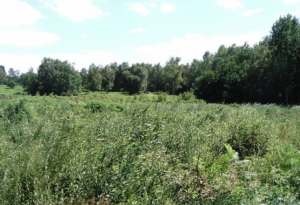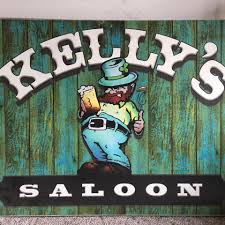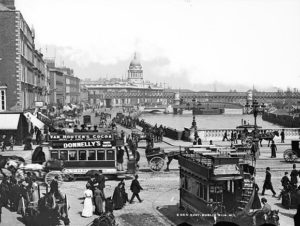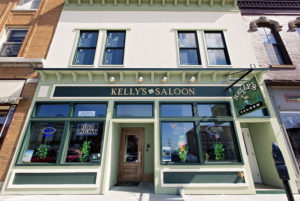On one of our first days of class, we discussed topics that we stereotypically associate with Ireland. The following ideas came to mind: overconsumption of alcohol, having a lot of babies, the color green, sheep, bogs, potatoes, emotionally sporadic, and poverty. The idea that thinking of Ireland sets off mental triggers for certain words is very ill-advised, it paints a diverse Ireland in a way that can be summarized by one word. This is not only simply wrong, but it is damaging to the people, the culture, the economy, and the view from other parts of the world.

These responses are both positives and negatives, but what they all have in common is their contribution to creating a national identity. A lot of stereotypes can be discussed as having a grain of truth based on the idea of landscape. The problem with this type of thinking is that Ireland as a whole is categorized under these modes, preserving Ireland as a single story to the rest of the world. Additionally, these stereotypes were used in literature.
William Butler Yeats employed some of these stereotypes in order to make his works that would be vague more ‘Irish’ to appeal to a more specific audience. Specifically, The Celtic Twilight by Yeats contains many works pertaining to the Irish landscape in particular. In his folklore tale, “A Voice”, these generalizations are made by the description of “marshy ground” (like bogs), and children dressed in olive green clothing. However, this examination of stereotypically Irish things backfires when there is mention of something beyond the general knowledge of outsiders to Irish culture: Yeats writes that he was “preoccupied with Aengus and Edain, and with Manannan, God of the Sea” — this radically excludes a wider audience. The exclusion and inclusion of certain types of audiences is very interesting, as Yeats can be argued to be someone who was delivering positive stereotypes. The positive stereotypes are the beauty of Ireland and the simplicity of this life he wishes to return to. Though, the simplicity as also quite the problem because of thinking Ireland is just a simple place while it has cities as well. Especially during the time of Yeats, Dublin would have been very populated.
As discussed in another page, J.M. Synge is another who has contributed to the single story issue. He tends to portray the Aran Islands in a way that it is Ireland completely and the lifestyle there is found all over the country.
Irish Stereotypes like Celticism ingrained in everything are prevalent throughout the world which shows that the single stories have been bought into. That dangerous exchange of power makes Ireland seem simple and it is often found with things like alcohol and bars. Many “Irish” bars in United States are portrayed with Celtic imagery or most often: Leprechauns and clovers.
The bar pictured above is a prime example for how the Irish stereotypes are played out in the world. This is Kelly’s Saloon, an establishment that portrays many of the negative aspects that can be thought of for Irish Stereotypes. The name of the bar has a four-leaf clover in it, everything is green, and the sign is the particularly harmful aspect. 
The most harmful piece of this sign is the symbol being a “drunken Irishmen”. This is an extremely disrespectful image as it portrays the Irish this way entirely. The single image here connects to the idea of the single story, it is something that people will call towards their minds when they think of the Irish people from a simple stereotype plastered in the middle of a bustling town. That is the problem with having stereotypes so visible to the public, especially in an area that may not have a very large Irish population. The image will be seen and let to continue, portraying an entire country’s population as a single image.
The Irish ideal is looked for in many forms. Eamon De Valera has searched for this by demanding what he expects of people for a truly Irish person. He says “That Ireland which we dreamed of would be the home of a people who valued material wealth only as the basis of right living, of a people who were satisfied with frugal comfort and devoted their leisure to the things of the spirit-a land whose countryside would be bright with cosy homesteads” (De Valera 466). He is being exclusive to a certain group of people as well as making sure the average person is following the “ideal” life to bring back an “ideal” Ireland. It is significant that he uses the word “we” as a way to collectively use the entire Irish people as one mode of bringing back the Ideal, even if individuals do not necessarily agree.


